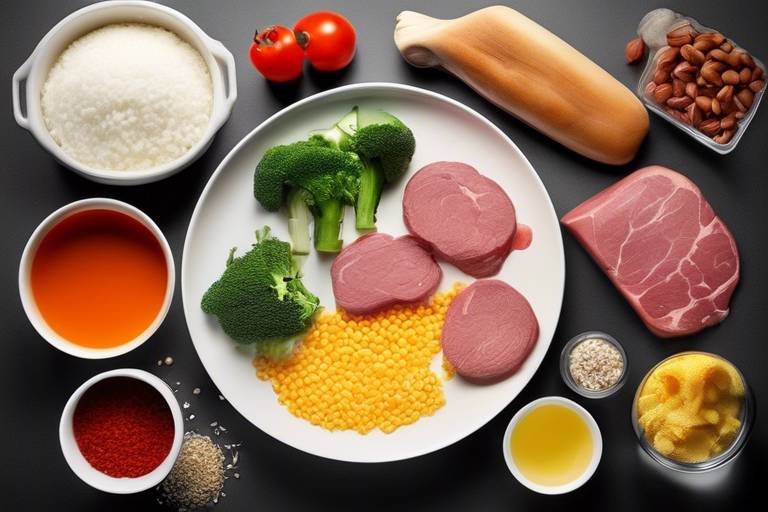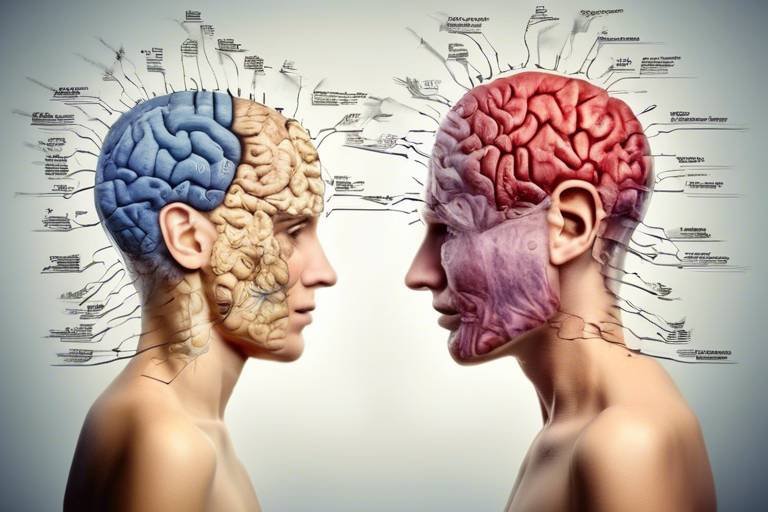The Physics of Aerodynamics - How Planes Fly
Have you ever looked up at a plane soaring through the sky and wondered, "How on Earth does that heavy metal bird stay up there?" It's a common question that sparks curiosity about the fascinating world of aerodynamics. In simple terms, aerodynamics is the study of how air interacts with moving objects, and it plays a crucial role in the design and functionality of aircraft. This article dives into the fundamental principles that enable flight, exploring the forces at play and the science behind airplane design and performance. By understanding these concepts, you’ll gain insight into the incredible engineering that allows planes to defy gravity.
Lift is the magical force that allows an airplane to rise off the ground. But how is lift generated? Imagine holding your hand out of the window of a moving car; if you tilt your hand at just the right angle, you can feel it being pushed upward. This phenomenon is similar to how airplane wings work. The shape of the wing, known as an airfoil, is designed to create a difference in air pressure above and below the wing. When the plane moves forward, air flows faster over the top of the wing and slower underneath, resulting in a net upward force—this is lift!
Several factors influence the effectiveness of lift, including:
- Wing Shape: Different wing designs can optimize lift for various flight conditions.
- Angle of Attack: This is the angle between the wing and the oncoming air; a higher angle can increase lift up to a point, beyond which it can lead to stalling.
- Air Density: Higher altitudes have thinner air, which can reduce lift.
Just as lift is essential for climbing, drag is the opposing force that slows an aircraft down. Think of drag as the air's way of pushing back against the plane's forward motion. It's a critical consideration in aerodynamics because it affects flight efficiency. The faster an aircraft moves, the more drag it encounters. Understanding drag is vital for engineers who aim to design aircraft that can cut through the air with minimal resistance.
Drag can be classified into various types, each impacting an aircraft's performance differently. The two primary categories are:
- Parasitic Drag: This type arises from the aircraft's shape and surface friction. It's like trying to run through water; the more surface area you have, the harder it is to move. Engineers work diligently to design streamlined aircraft that reduce parasitic drag, ultimately improving fuel efficiency and speed.
- Induced Drag: This drag occurs as a byproduct of lift generation. As lift increases, so does induced drag. Interestingly, induced drag varies with speed; it decreases at higher speeds and increases at lower speeds, making it crucial for pilots to manage it effectively.
Minimizing drag is essential for enhancing flight performance. Engineers employ various techniques and technologies to achieve this, including:
- Wing Design: Innovations like winglets help reduce vortex drag.
- Surface Materials: Smooth surfaces can minimize friction and improve airflow.
- Streamlined Shapes: The overall shape of the aircraft is optimized to reduce drag.
Thrust is the force that propels an aircraft forward, and it's generated by the engines. Just like a car needs an engine to move, planes rely on thrust to overcome drag and achieve lift. The relationship between thrust, lift, and drag is a delicate balance that pilots must manage during flight to ensure a smooth journey.
There are various types of engines used in aircraft, each with unique characteristics. The two main types are:
- Jet Engines: These engines work by expelling exhaust gases at high speed, creating a powerful thrust.
- Propeller Engines: These engines use rotating blades to push air backward, propelling the aircraft forward.
Each engine type has its advantages and applications, influencing aircraft design and performance.
An aircraft's stability and control are vital for safe flight. Stability refers to the aircraft's ability to maintain its flight path, while control allows pilots to maneuver effectively. There are three types of stability to consider:
- Longitudinal Stability: This relates to the pitch of the aircraft.
- Lateral Stability: This concerns the roll of the aircraft.
- Directional Stability: This deals with the yaw of the aircraft.
Pilots use various control surfaces to maintain stability and control during flight.
Control surfaces like ailerons, elevators, and rudders play a significant role in maneuvering an aircraft. Ailerons control roll, elevators manage pitch, and rudders steer the aircraft left or right. These surfaces work together to ensure that pilots can navigate through the skies safely and efficiently.
Understanding aerodynamics extends beyond aviation. Its principles are applied in various fields, including:
- Automotive Design: Engineers utilize aerodynamic principles to design cars that minimize drag and enhance stability.
- Sports: Athletes and equipment designers apply aerodynamics to improve performance.
- Environmental Science: Aerodynamics plays a role in studying wind patterns and their effects on ecosystems.
Aerodynamics significantly influences vehicle performance and fuel efficiency. Automotive engineers apply aerodynamic principles to create designs that reduce drag, enhancing speed and stability on the road.
Advancements in technology continue to shape the field of aerodynamics. Emerging trends such as computational fluid dynamics allow engineers to simulate airflow over designs, leading to more efficient aircraft. Additionally, sustainable aviation practices are gaining traction, focusing on reducing environmental impact while maintaining performance. The future of aerodynamics looks promising, with innovations paving the way for safer, faster, and more eco-friendly flight.
Q: What is the primary force that allows airplanes to fly?
A: The primary force is lift, which is generated by the wings as air flows over them.
Q: How do pilots control an aircraft?
A: Pilots use control surfaces such as ailerons, elevators, and rudders to maneuver the aircraft.
Q: What are the main types of drag?
A: The main types of drag are parasitic drag, caused by the aircraft's shape, and induced drag, which is a byproduct of lift generation.
Q: How can drag be minimized in aircraft design?
A: Drag can be minimized through streamlined shapes, smooth surfaces, and innovative wing designs.
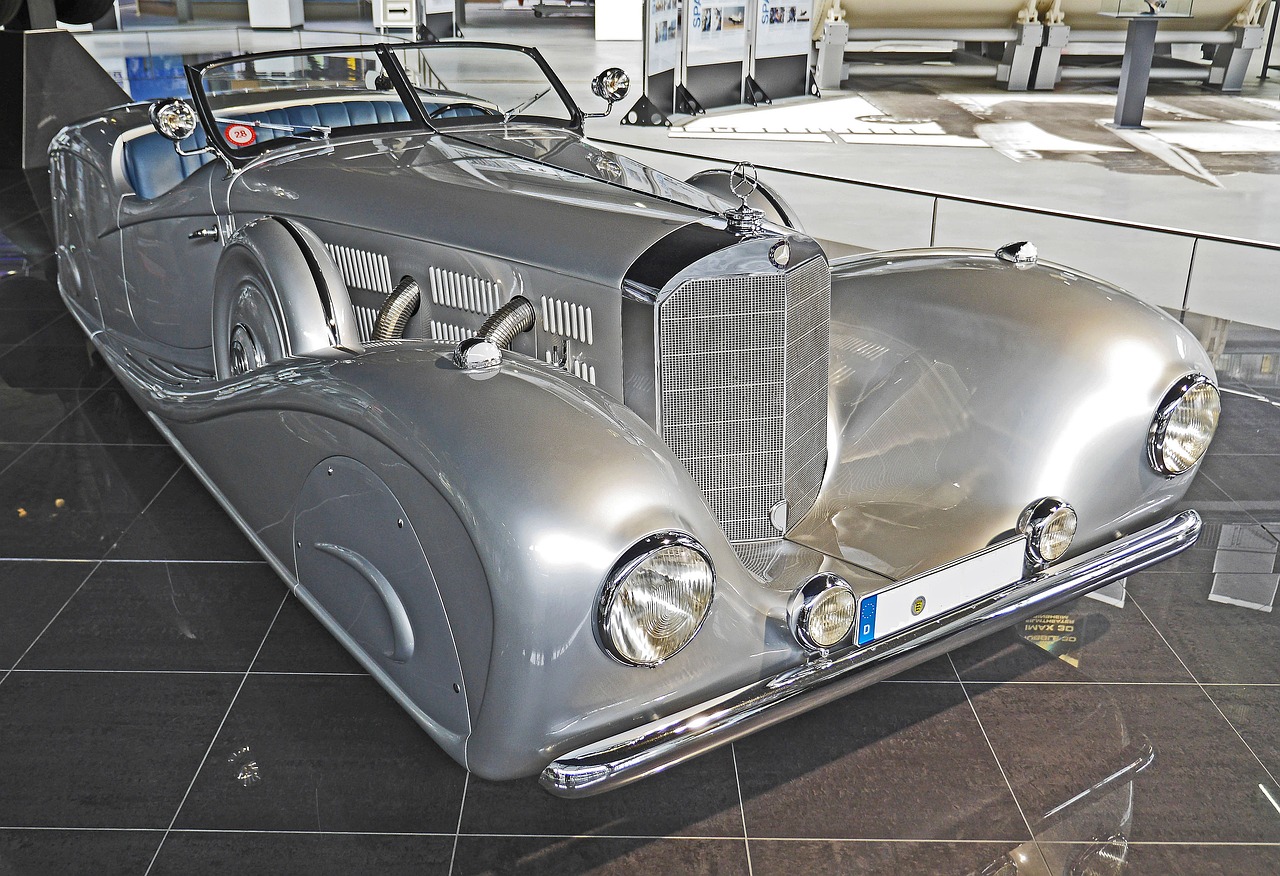
Understanding Lift
Lift is the magical force that allows airplanes to defy gravity and soar into the sky. Imagine a bird flapping its wings; it’s essentially the same principle at play here. Lift is generated primarily by the aircraft's wings, which are designed with a specific shape known as an airfoil. When the plane moves forward, air flows over and under the wings, creating a difference in pressure that results in lift. But what factors influence this lift? Let’s dive deeper!
The shape of the wing, or its airfoil design, plays a crucial role in how effectively lift is generated. A well-designed airfoil has a curved upper surface and a flatter lower surface. This design allows air to travel faster over the top of the wing, creating lower pressure above the wing and higher pressure underneath. This pressure difference is what lifts the plane off the ground. Additionally, the angle of attack—the angle between the wing and the oncoming air—also significantly affects lift. A higher angle of attack increases lift, but only up to a point; beyond that, the wing can stall, causing a sudden loss of lift.
Moreover, several factors can influence the amount of lift produced:
- Speed: The faster the plane moves, the more lift is generated. This is why takeoff requires a runway long enough for the aircraft to reach its necessary speed.
- Air Density: Lift is also affected by the density of the air. At higher altitudes, the air is thinner, which can reduce lift. This is why planes require longer runways in high-altitude airports.
- Wing Area: Larger wings can produce more lift. This is why larger aircraft, like cargo planes, have significantly bigger wings compared to smaller jets.
Understanding lift is not just about physics; it's about the art of engineering. Engineers meticulously design wings to optimize their shape and size, ensuring that they can generate enough lift for the aircraft to take off, cruise, and land safely. This intricate balance between lift, weight, thrust, and drag is what makes aviation such a fascinating field. As you can see, lift is not just a simple concept; it’s a complex interplay of various elements working together to enable flight.
In summary, lift is a fundamental force in aerodynamics that allows planes to fly. By understanding the principles behind lift generation, including wing shape, angle of attack, and other influencing factors, we can appreciate the intricate design and engineering that goes into making flight possible. So, the next time you see a plane take off, remember the incredible science of lift that is at work!

The Role of Drag
When we think about flight, we often imagine the graceful ascent of an aircraft slicing through the sky. However, lurking in the background, there’s a force that works tirelessly against this upward motion: drag. Drag is essentially the enemy of flight, a force that opposes an aircraft's motion through the air. It’s like trying to run through water; the more you push forward, the more resistance you feel. Understanding drag is crucial for engineers and pilots alike, as it directly affects an aircraft's efficiency and performance.
Drag can be thought of as the friction that occurs between the aircraft and the air around it. This friction is not just a simple hindrance; it can significantly impact fuel consumption and speed. In fact, a well-designed aircraft can minimize drag, allowing it to glide smoothly through the atmosphere, much like a bird effortlessly soaring on the wind. But what exactly causes drag, and how does it influence an aircraft's flight?
There are two primary types of drag that we need to consider: parasitic drag and induced drag. Parasitic drag arises from the aircraft's shape and surface friction, while induced drag is a byproduct of lift generation. Let’s break these down a bit further:
| Type of Drag | Description | Impact on Flight |
|---|---|---|
| Parasitic Drag | Occurs due to the aircraft's shape and surface roughness. | Increases with speed; can be reduced with streamlined designs. |
| Induced Drag | Generated as a result of lift; varies with angle of attack. | Increases at low speeds; crucial to manage for efficient flight. |
So, how can we combat this unwelcome force? One of the most effective strategies is through streamlined design. Engineers work tirelessly to create aircraft that cut through the air with minimal resistance, much like a well-designed sports car hugging the road. Features such as sleek fuselages, tapered wings, and smooth surfaces all contribute to reducing parasitic drag. On the other hand, controlling induced drag involves managing the angle of attack and speed, ensuring that the aircraft maintains optimal performance during various phases of flight.
In summary, while drag may be a formidable foe in the world of aerodynamics, understanding its nature and implementing effective design strategies can significantly enhance an aircraft's performance. By minimizing drag, we not only improve fuel efficiency but also pave the way for faster, more agile aircraft, ultimately transforming the way we travel through the skies.
- What is drag in aerodynamics? Drag is the aerodynamic force that opposes an aircraft's motion through the air, affecting speed and fuel efficiency.
- What are the two main types of drag? The two main types of drag are parasitic drag, which arises from the aircraft's shape, and induced drag, which is a byproduct of lift generation.
- How can drag be minimized? Drag can be minimized through streamlined designs, optimizing wing shapes, and managing the angle of attack during flight.
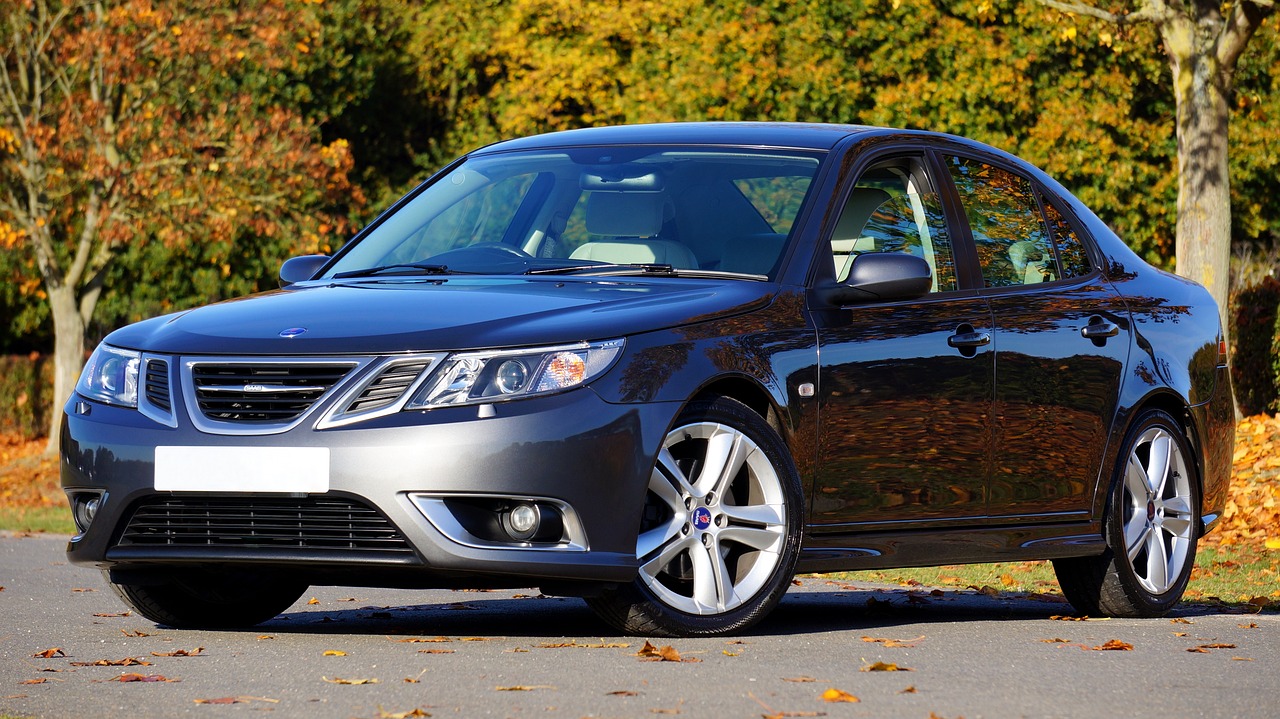
Types of Drag
When we talk about drag in the context of aerodynamics, we're referring to the forces that resist an aircraft's motion through the air. Just like how a swimmer feels resistance when moving through water, airplanes experience drag as they slice through the atmosphere. Understanding the different types of drag is crucial for engineers and pilots alike, as it directly impacts an aircraft's performance and efficiency.
Drag can be broadly classified into two main categories: parasitic drag and induced drag. Each type has its own characteristics and implications for flight. Let's dive deeper into these categories to see how they affect an aircraft's journey through the skies.
Parasitic drag is the result of the aircraft's shape and surface characteristics. Think of it as the aerodynamic "friction" that occurs when an object moves through the air. This type of drag can be further broken down into three components:
- Form Drag: This occurs due to the shape of the aircraft. The more streamlined the shape, the less form drag it generates. For instance, a sleek, modern aircraft will experience less form drag compared to an older, boxy design.
- Skin Friction Drag: This is caused by the friction between the air and the surface of the aircraft. Rough surfaces create more turbulence and increase skin friction drag, while smooth surfaces minimize it.
- Interference Drag: This type arises when different parts of the aircraft interact with each other, such as where the wings meet the fuselage. Engineers strive to minimize this drag by optimizing the design and placement of various components.
Understanding parasitic drag is essential for engineers aiming to design more efficient aircraft. By creating streamlined shapes and using smoother materials, they can significantly enhance fuel efficiency and speed, allowing planes to cover more distance with less energy.
Induced drag, on the other hand, is a byproduct of lift generation. When an aircraft generates lift, it creates a pressure difference between the upper and lower surfaces of the wings. This pressure difference results in the formation of vortices at the wingtips, which in turn creates induced drag. Interestingly, induced drag varies with speed; as an aircraft flies faster, induced drag decreases. However, during takeoff and landing—when speeds are lower—induced drag is more pronounced.
It's fascinating to note that while we often think of drag as a negative force, both parasitic and induced drag are essential considerations in aircraft design. They are part of the delicate balance that engineers must maintain to ensure optimal performance. By understanding the nuances of these drag types, pilots can make informed decisions that enhance flight efficiency and safety.
In summary, the two primary types of drag—parasitic and induced—play critical roles in the aerodynamics of flight. By minimizing parasitic drag through sleek designs and managing induced drag through optimal speed and lift strategies, aircraft can achieve greater efficiency and performance in the skies.
Q: What is drag in aerodynamics?
A: Drag is the aerodynamic force that opposes an aircraft's motion through the air, affecting its speed and fuel efficiency.
Q: How can drag be minimized?
A: Drag can be minimized through streamlined designs, smooth surfaces, and careful management of speed and lift during flight.
Q: What is the difference between parasitic drag and induced drag?
A: Parasitic drag arises from the aircraft's shape and surface, while induced drag is a byproduct of lift generation and varies with speed.

Parasitic Drag
Parasitic drag is one of the most significant challenges faced by aircraft designers and engineers. It arises primarily from the shape of the aircraft and the friction between the aircraft's surface and the air as it moves through it. Imagine trying to swim through a pool filled with thick syrup instead of water; the resistance you feel is similar to what an aircraft experiences as it cuts through the atmosphere. This type of drag can be divided into two main components: form drag and skin friction drag.
Form drag is generated by the shape of the aircraft. The more streamlined and aerodynamic the shape, the less form drag it will encounter. For instance, a sleek, modern jetliner is designed with a pointed nose and smooth contours to minimize this type of drag. On the other hand, an aircraft with a boxy or irregular shape will experience higher form drag, making it less efficient. To illustrate this, consider the following table that compares the form drag of different aircraft shapes:
| Aircraft Shape | Form Drag Coefficient |
|---|---|
| Sleek Jet | 0.02 |
| Commercial Airliner | 0.05 |
| Boxy Cargo Plane | 0.09 |
Next, we have skin friction drag, which is caused by the surface roughness of the aircraft. Just like how a rough surface creates more resistance when you try to slide your hand across it, a rough aircraft surface creates more friction with the air. Engineers take great care to ensure that the surfaces of aircraft are as smooth as possible, often using advanced materials and coatings to reduce this drag. For example, the use of special paint can help create a smoother airflow over the aircraft's surface, thereby decreasing skin friction drag.
Reducing parasitic drag is crucial for enhancing fuel efficiency and overall performance. Aircraft manufacturers are continually innovating new designs and materials to combat this issue. By optimizing the shape of the aircraft and ensuring that its surface is as smooth as possible, engineers can significantly improve the aircraft's performance. This is not just about speed; it's also about conserving fuel and reducing operational costs, which are vital in today’s competitive aviation industry.
In conclusion, parasitic drag is an essential consideration in the design and operation of aircraft. Understanding its components and how they interact with the forces of flight allows engineers to create more efficient and effective aircraft. As technology advances, the fight against parasitic drag will continue, leading to innovations that could transform the way we fly.
- What is parasitic drag? Parasitic drag is the resistance an aircraft experiences due to its shape and surface friction as it moves through the air.
- How can parasitic drag be minimized? Parasitic drag can be minimized through streamlined designs and smooth surface treatments to reduce both form and skin friction drag.
- Why is reducing parasitic drag important? Lowering parasitic drag improves fuel efficiency, increases speed, and enhances overall aircraft performance.

Induced Drag
Induced drag is a fascinating aspect of aerodynamics that often flies under the radar, pun intended! This type of drag is a natural byproduct of lift generation, and understanding it is crucial for both aircraft design and performance. When an airplane flies, its wings create lift, allowing it to soar through the sky. However, this very lift also leads to the creation of induced drag, which acts in the opposite direction of the aircraft's motion.
To grasp the concept of induced drag, think of it as the "cost" of generating lift. When an aircraft's wings generate lift, they create a difference in air pressure above and below them. This pressure differential causes air to flow around the wingtips, creating vortices. These swirling air currents increase drag, and as such, induced drag becomes more pronounced at lower speeds and higher angles of attack. In essence, the more lift you need, the more induced drag you’ll encounter.
Induced drag is not just a pesky force; it significantly influences how an aircraft performs. For instance, during takeoff and landing—when the aircraft is operating at lower speeds and higher angles of attack—the induced drag can be substantial. Pilots must be aware of this drag to maintain optimal flight conditions. As speed increases and the angle of attack decreases, induced drag diminishes, which is why aircraft are designed to cruise at higher velocities.
In terms of quantifying induced drag, it can be represented using the following formula:
D_i (C_L^2 * ρ * V^2 * S) / (2 * π * A)
Where:
- D_i Induced drag
- C_L Coefficient of lift
- ρ Air density
- V Velocity of the aircraft
- S Wing area
- A Aspect ratio of the wing
This formula illustrates how induced drag is influenced by various factors, including wing shape and size. For instance, aircraft with a higher aspect ratio—meaning longer wings relative to their width—tend to experience less induced drag, which is why gliders, with their long wings, are so efficient in the air.
In conclusion, understanding induced drag is essential for pilots and engineers alike. By recognizing how lift and drag interact, they can optimize aircraft design and performance, ensuring safer and more efficient flights. As technology advances, the challenge remains to manage induced drag effectively, paving the way for innovations that could redefine how we think about flight.
- What is induced drag? Induced drag is the drag force that occurs as a result of lift generation, primarily influenced by the wing's angle of attack and speed.
- How does induced drag change with speed? Induced drag decreases as the speed of the aircraft increases and the angle of attack decreases.
- Why is induced drag more significant during takeoff and landing? During these phases of flight, aircraft operate at lower speeds and higher angles of attack, which increases the lift and, consequently, the induced drag.

Reducing Drag
Reducing drag is a critical aspect of enhancing flight performance, and it’s a challenge that engineers and designers face constantly. Think of drag as the invisible hand that pushes back against an aircraft as it tries to soar through the sky. Just like how a swimmer feels resistance when they move through water, airplanes experience a similar force when they slice through the air. The goal is to make that hand as light as possible, allowing for smoother and more efficient flights.
One of the primary methods to reduce drag is through **streamlined designs**. A streamlined shape minimizes the turbulence created as air flows over the aircraft. For instance, consider the difference between a sleek, modern sports car and a bulky, boxy vehicle. The sports car, with its smooth curves, experiences less wind resistance, allowing it to move faster and more efficiently. Similarly, aircraft designers focus on creating shapes that allow air to flow smoothly around them, reducing the amount of drag encountered during flight.
Another significant factor in drag reduction is the **wing design**. Wings are not just flat surfaces; they are carefully engineered to maximize lift while minimizing drag. The angle of attack, which is the angle between the wing and the oncoming air, plays a crucial role here. A well-optimized wing can help an aircraft maintain lift without incurring excessive drag. Engineers often conduct extensive testing, including wind tunnel experiments, to find the perfect balance between lift and drag for various aircraft types.
Additionally, the materials used in aircraft construction can significantly impact drag. Lightweight materials, such as composites and advanced alloys, not only reduce the overall weight of the aircraft but also help in achieving a more aerodynamic shape. By using materials that can be molded into smooth, flowing designs, engineers can further decrease the drag force acting against the aircraft.
Moreover, the **surface texture** of the aircraft is another area where drag can be minimized. A smooth surface allows air to flow more easily, whereas rough surfaces create turbulence that increases drag. This is why many modern aircraft are designed with specialized coatings that reduce surface friction. Engineers are continually researching and developing new materials and finishes that can enhance aerodynamic efficiency.
To illustrate the impact of these techniques, consider the following table that compares the drag coefficients of different aircraft designs:
| Aircraft Type | Drag Coefficient (Cd) |
|---|---|
| Conventional Aircraft | 0.05 - 0.1 |
| Streamlined Aircraft | 0.02 - 0.04 |
| Fighter Jets | 0.03 - 0.06 |
| Gliders | 0.01 - 0.02 |
This table clearly shows that streamlined designs can significantly reduce drag, enhancing overall flight efficiency. As technology continues to advance, engineers are finding innovative ways to further minimize drag, ensuring that future aircraft are not only faster but also more fuel-efficient.
In conclusion, reducing drag is an ongoing pursuit in the field of aerodynamics. By focusing on streamlined designs, optimizing wing shapes, utilizing lightweight materials, and improving surface textures, engineers are making remarkable strides in enhancing the performance of aircraft. The next time you see a plane soaring through the sky, remember the intricate science that goes into making it as efficient as possible!
Q1: What is drag in aviation?
A1: Drag is the aerodynamic force that opposes an aircraft's motion through the air, making it a critical factor in flight performance.
Q2: How does wing design affect drag?
A2: Wing design plays a significant role in drag reduction. An optimally shaped wing reduces turbulence and allows for better airflow, minimizing drag.
Q3: What materials are best for reducing drag?
A3: Lightweight materials such as composites and advanced alloys are ideal for reducing drag, as they allow for smoother, more aerodynamic designs.
Q4: Can drag be completely eliminated?
A4: No, drag cannot be completely eliminated, but it can be minimized through various design strategies and technologies.
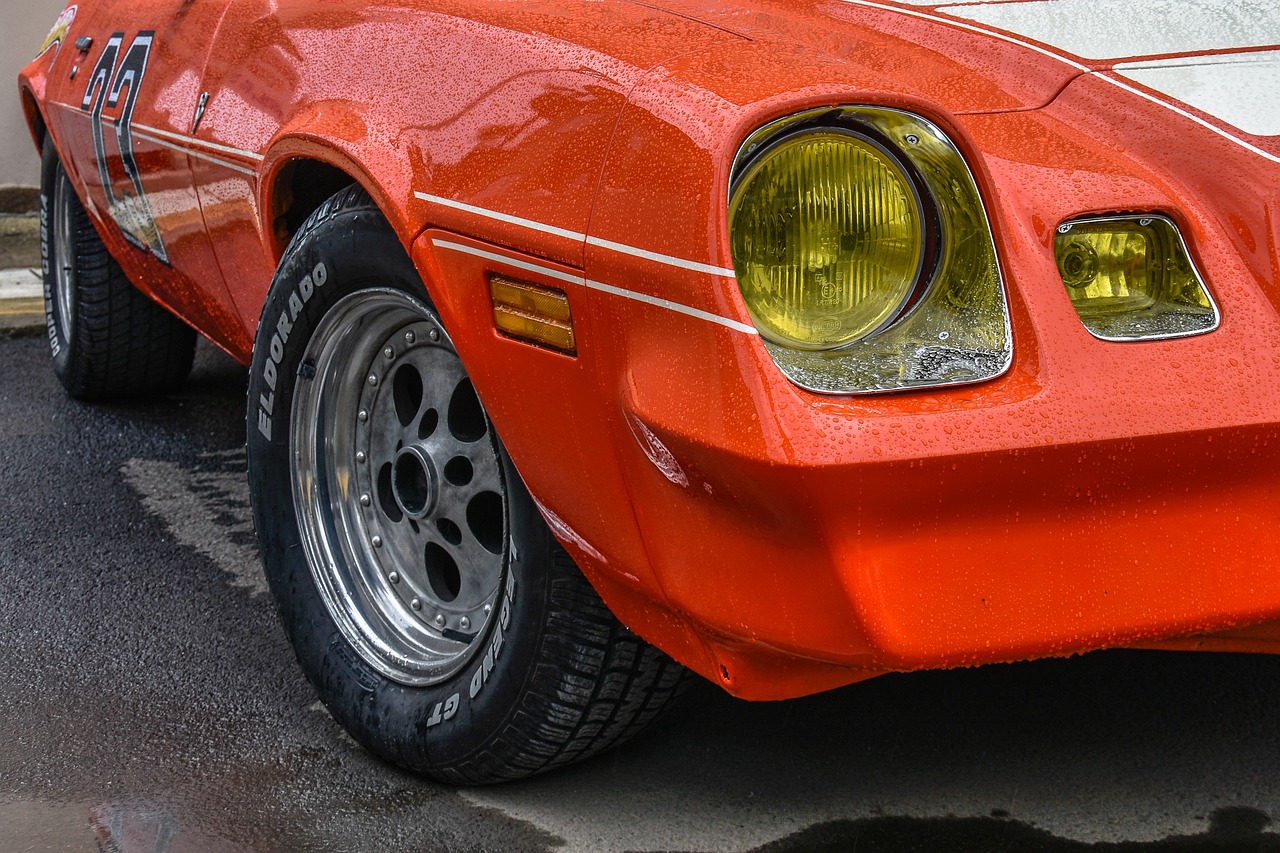
The Importance of Thrust
Thrust is the driving force behind an aircraft's journey through the skies. Imagine trying to push a heavy object across a surface—without sufficient force, it simply won't move. The same principle applies to airplanes. Thrust is what propels an aircraft forward, overcoming the resistive forces of drag and allowing the plane to ascend into the air. This fundamental force is generated by the aircraft's engines, which can be likened to the heart of the plane, pumping energy to keep it in motion. But how exactly does this work?
When an aircraft is on the runway, its engines produce thrust by expelling air backward, following Newton's Third Law of Motion: for every action, there is an equal and opposite reaction. As the engines push air out, the plane is propelled forward. This relationship between thrust, lift, and drag is crucial for understanding flight dynamics. Without adequate thrust, an aircraft cannot achieve the necessary speed to generate lift, and thus, it remains grounded.
There are various factors that influence thrust generation, including:
- Engine Type: Different engines produce different thrust levels. For instance, jet engines are designed to provide high thrust at high speeds, while propeller engines are more efficient at lower speeds.
- Altitude: As an aircraft climbs, the air becomes thinner, which can affect engine performance and, consequently, thrust.
- Weight: Heavier aircraft require more thrust to achieve flight, making weight management a critical aspect of aircraft design.
To illustrate the relationship between thrust and other forces during flight, consider the following table:
| Force | Description | Impact on Flight |
|---|---|---|
| Thrust | Forward force generated by engines | Enables the aircraft to move forward and achieve lift |
| Lift | Upward force generated by wings | Allows the aircraft to rise into the air |
| Drag | Resistance force opposing thrust | Slows down the aircraft; must be minimized for efficient flight |
Understanding thrust is essential not just for pilots but also for engineers who design aircraft. The balance between thrust, lift, and drag is what makes flight possible. By optimizing thrust through advancements in engine technology and design, the aviation industry can enhance performance, improve fuel efficiency, and ultimately make flying safer and more accessible.
In conclusion, thrust is a vital component of flight that cannot be overlooked. It is the force that enables aircraft to overcome drag and ascend into the skies, making it a cornerstone of aerodynamics. Without it, the dream of flight would remain just that—a dream.
- What is thrust in aviation? Thrust is the force that propels an aircraft forward, generated by its engines.
- How does thrust relate to lift? Thrust must be sufficient to overcome drag and allow the aircraft to reach the speed necessary to generate lift.
- What factors affect thrust? Factors include engine type, altitude, and the weight of the aircraft.
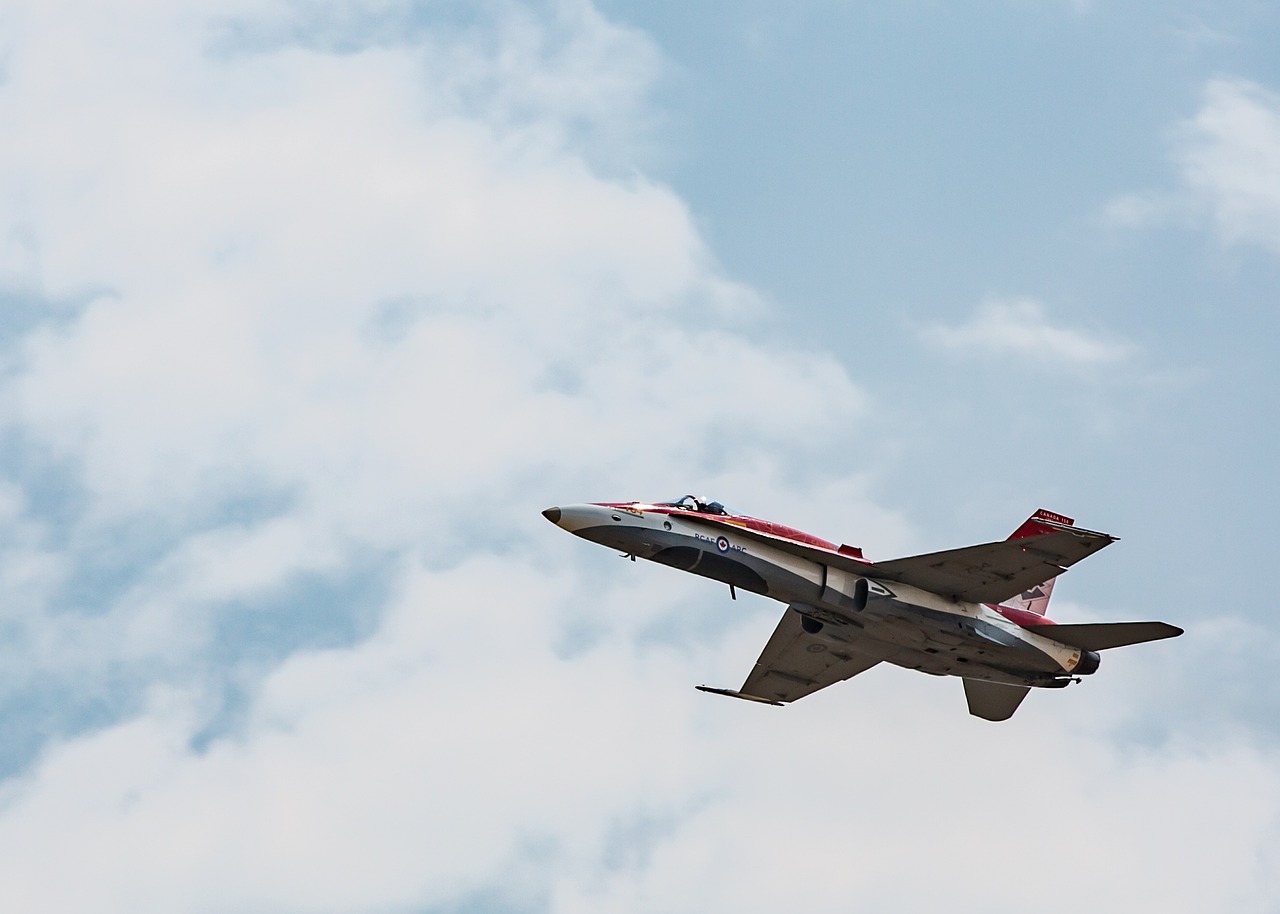
Types of Aircraft Engines
When it comes to aircraft propulsion, understanding the types of engines is essential. Each engine type has its own unique characteristics that cater to different flying needs. The two primary categories are jet engines and propeller engines, each playing a crucial role in aviation.
Jet engines are the powerhouse behind most commercial airliners and military jets. They operate on the principle of Newton's Third Law of Motion, which states that for every action, there is an equal and opposite reaction. Essentially, they suck in air, compress it, mix it with fuel, ignite the mixture, and expel the exhaust gases at high speed. This process generates a significant amount of thrust, allowing jets to reach high speeds and altitudes. One of the most remarkable features of jet engines is their ability to maintain efficiency at high altitudes, where thinner air reduces drag.
On the other hand, propeller engines are commonly found in smaller aircraft, including regional planes and some military aircraft. These engines use a rotating blade, or propeller, to create thrust. The propeller works by converting the engine's rotational power into aerodynamic lift. Unlike jet engines, propeller engines excel at lower speeds and altitudes, making them ideal for short-haul flights and takeoffs from smaller airstrips. They tend to be more fuel-efficient at these lower speeds, providing a cost-effective solution for regional travel.
Here’s a quick comparison of the two types of engines:
| Feature | Jet Engines | Propeller Engines |
|---|---|---|
| Speed | High speed | Lower speed |
| Altitude | High altitude | Low altitude |
| Efficiency | Efficient at high speeds | Efficient at low speeds |
| Common Use | Commercial airliners, military jets | Regional planes, small aircraft |
In addition to these primary types, there are also hybrid and experimental engines that are being developed to improve efficiency and reduce environmental impact. For instance, turbo-prop engines combine features of both jet and propeller engines, utilizing a gas turbine engine to drive the propeller. This innovation allows for better fuel efficiency and performance at various altitudes.
As technology advances, we can expect to see even more diversity in aircraft engines, paving the way for greener and more efficient aviation. With ongoing research into electric and hybrid propulsion systems, the future of aircraft engines looks promising. The quest for sustainable aviation is not just about speed and power; it's about making air travel more environmentally friendly and accessible for everyone.
- What is the main difference between jet and propeller engines? Jet engines are designed for high-speed, high-altitude travel, while propeller engines are more efficient at lower speeds and altitudes.
- Can propeller engines be used in commercial aviation? Yes, propeller engines are commonly used in regional flights and smaller aircraft.
- What are turbo-prop engines? Turbo-prop engines are a hybrid that uses a gas turbine engine to drive a propeller, offering benefits of both engine types.
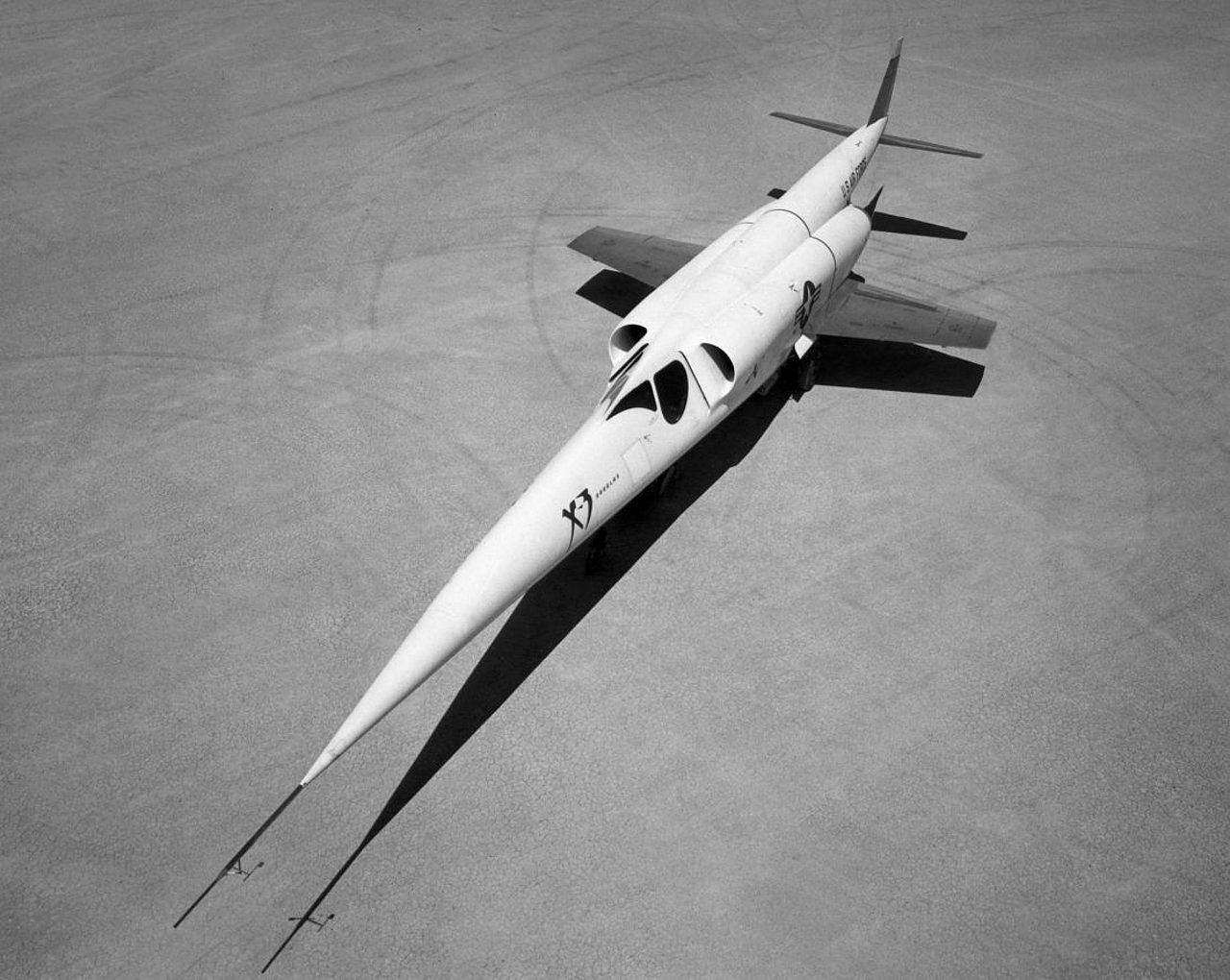
Stability and Control
When it comes to flying, are the unsung heroes that keep an aircraft safely in the air. Imagine trying to balance a pencil on your finger; it takes a delicate touch and constant adjustments to keep it upright. In the same way, pilots must continuously manage the forces acting on an aircraft to ensure it remains stable throughout the flight. Stability refers to the aircraft's ability to return to its original position after being disturbed, while control allows the pilot to maneuver the aircraft as needed. Together, these principles form the backbone of safe and effective flight.
There are three main types of stability that every pilot must understand: longitudinal, lateral, and directional stability. Longitudinal stability is all about the aircraft's pitch, or its nose-up and nose-down attitude. Think of it like a seesaw; if one end goes up, the other must come down to maintain balance. Lateral stability, on the other hand, deals with the aircraft's roll, ensuring that it doesn't tip over to the sides. Lastly, directional stability helps keep the aircraft flying straight, preventing unwanted yawing movements. Each type of stability plays a crucial role in how an aircraft behaves in the air, and understanding these concepts is essential for any pilot.
To maintain control, pilots rely on various control surfaces located on the aircraft. These surfaces include ailerons, elevators, and rudders, each serving a unique purpose in maneuvering the aircraft. For instance, ailerons are primarily responsible for rolling the aircraft, allowing it to bank left or right during turns. Elevators control the pitch, helping the aircraft climb or descend, while the rudder manages yaw, assisting in directional changes. Together, these surfaces work in harmony, enabling pilots to navigate through the skies with precision and ease.
Moreover, the design of an aircraft plays a significant role in its stability and control. Engineers meticulously calculate the center of gravity, which is the point where the aircraft balances. If the center of gravity is too far forward or backward, it can lead to instability, making the aircraft difficult to control. This is why aircraft are designed with specific weight distributions and configurations to ensure optimal performance. The wing design also contributes to stability; for example, a high-wing configuration tends to offer better lateral stability compared to a low-wing design.
In conclusion, understanding stability and control is vital for both pilots and engineers. It’s not just about flying; it’s about ensuring safety and efficiency in the air. As technology advances, we can expect even greater improvements in aircraft design and control systems, making flying safer and more enjoyable for everyone.
- What is the difference between stability and control in aviation?
Stability refers to an aircraft's ability to maintain its flight path without constant input from the pilot, while control refers to the pilot's ability to maneuver the aircraft as needed. - How do control surfaces affect flight?
Control surfaces like ailerons, elevators, and rudders allow pilots to control the aircraft's roll, pitch, and yaw, respectively, enabling precise maneuvering. - Why is the center of gravity important?
The center of gravity affects an aircraft's stability. If it’s not properly balanced, the aircraft can become difficult to control and may even become unsafe to fly.
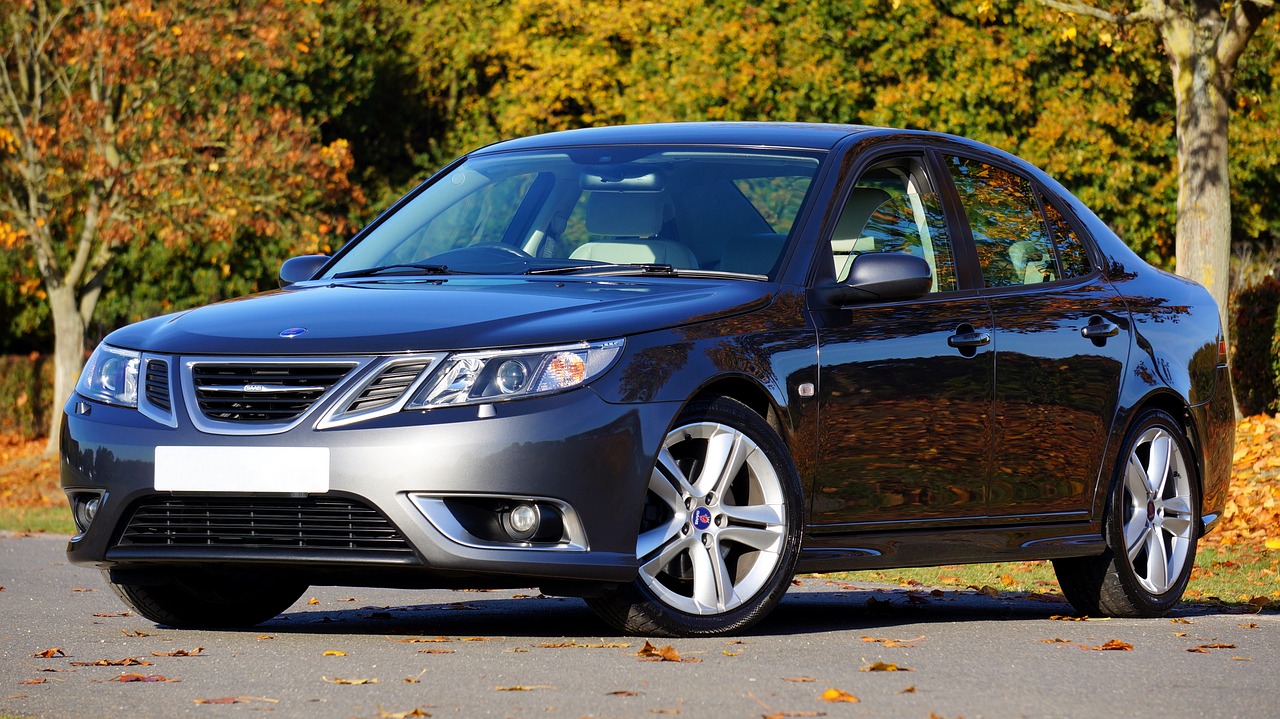
Control Surfaces
Control surfaces are the unsung heroes of an aircraft's maneuverability. They are like the steering wheel of a car, allowing pilots to navigate through the skies with precision and grace. These surfaces include ailerons, elevators, and rudders, each playing a unique role in controlling the aircraft's movement. Without them, flying would be akin to trying to steer a ship without a rudder—impossible and chaotic!
Let's break down the roles of these critical components:
- Ailerons: Located on the trailing edge of the wings, ailerons are responsible for controlling the aircraft's roll. When a pilot moves the control stick to the left or right, one aileron deflects upward while the other deflects downward. This movement creates a difference in lift between the wings, allowing the plane to tilt and turn smoothly.
- Elevators: Found on the tail, elevators control the pitch of the aircraft. When the pilot pulls back on the control stick, the elevators rise, causing the nose of the plane to pitch up. Conversely, pushing forward lowers the elevators, leading to a downward pitch. This is crucial for climbing or descending during flight.
- Rudders: Situated on the vertical stabilizer at the tail, rudders manage the yaw of the aircraft. This means they help control the left and right movements of the nose. When the pilot steps on the left or right rudder pedal, the rudder moves accordingly, allowing for smooth directional changes.
These control surfaces work in harmony to ensure that the aircraft remains stable and controllable during various flight conditions. Imagine trying to balance on a seesaw; if one side goes up, the other must come down to maintain equilibrium. Similarly, the interaction between ailerons, elevators, and rudders is essential for maintaining balance in the air.
Moreover, advancements in technology have led to the development of fly-by-wire systems, which use electronic controls instead of traditional mechanical linkages. This innovation allows for more precise control and reduces the pilot's workload, making flying safer and more efficient. It's as if the aircraft has its own brain, interpreting the pilot's intentions and executing them with remarkable accuracy!
In conclusion, control surfaces are vital for an aircraft's performance and safety. They enable pilots to execute complex maneuvers while ensuring stability and control throughout the flight. Understanding how these surfaces operate not only enhances our appreciation for aviation but also highlights the intricate engineering that keeps us soaring through the skies.
- What are control surfaces? Control surfaces are movable parts of an aircraft that help manage its flight path, including ailerons, elevators, and rudders.
- How do ailerons work? Ailerons control the roll of the aircraft by creating differences in lift between the wings when they are deflected up or down.
- What is the purpose of elevators? Elevators manage the pitch of the aircraft, allowing it to climb or descend based on the pilot's inputs.
- How do rudders affect flight? Rudders control the yaw, helping the aircraft turn left or right by adjusting the direction of the nose.
- What is fly-by-wire? Fly-by-wire is an advanced electronic control system that replaces traditional mechanical controls, allowing for more precise handling of the aircraft.
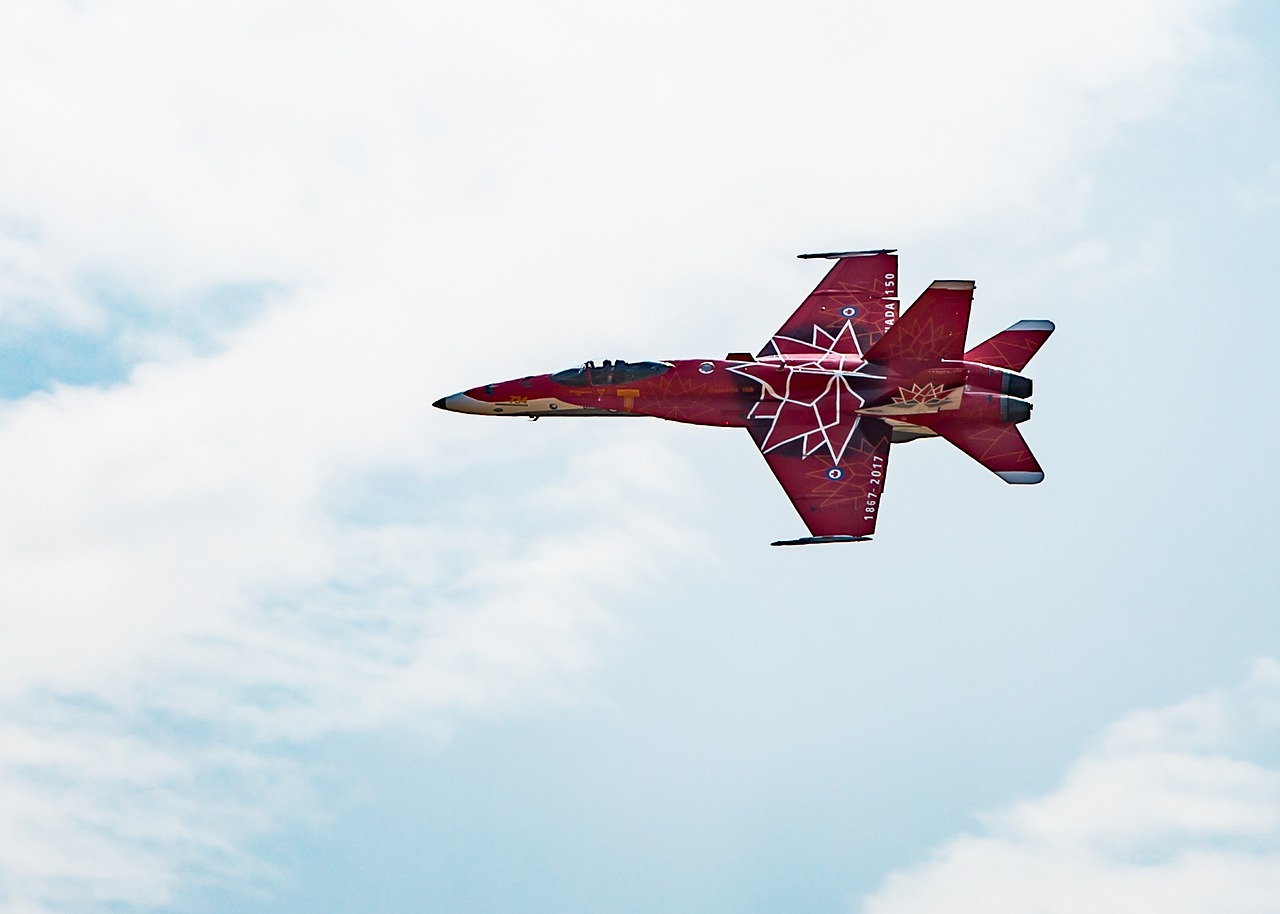
Applications of Aerodynamics
Aerodynamics is not just a concept confined to the skies; its influence stretches across various fields, impacting everything from transportation to sports. Understanding how air interacts with moving objects has led to significant advancements in design and efficiency. For instance, in the world of automotive engineering, aerodynamics plays a crucial role in shaping vehicles that glide through the air with minimal resistance. Car manufacturers invest heavily in wind tunnel testing to optimize the shape of their vehicles, ensuring they can achieve better fuel efficiency and performance on the road.
Moreover, aerodynamics is also a key factor in sports technology. Athletes and equipment designers leverage aerodynamic principles to enhance performance. Take cycling, for example: cyclists don streamlined helmets and tight-fitting suits to reduce drag, allowing them to achieve faster speeds. Similarly, in swimming, pool designs and swimmer suits are optimized to ensure minimal water resistance, showcasing the importance of aerodynamics in competitive sports.
Another fascinating application of aerodynamics is in the realm of environmental science. Understanding airflow patterns can help in predicting weather changes and studying pollution dispersion. By analyzing how air moves over various terrains, scientists can develop better models for climate forecasting and environmental protection strategies. This demonstrates that the principles of aerodynamics extend far beyond mere flight, affecting our daily lives in ways we might not even realize.
To further illustrate the diverse applications of aerodynamics, consider the following table that summarizes its impact across different fields:
| Field | Application |
|---|---|
| Aerospace | Design of aircraft and spacecraft for optimal flight performance |
| Automotive | Improving fuel efficiency and stability in vehicles |
| Sports | Enhancing performance through streamlined equipment and attire |
| Environmental Science | Modeling air pollution dispersion and climate patterns |
In conclusion, the applications of aerodynamics are vast and varied, influencing numerous industries and everyday activities. As technology continues to evolve, we can expect even more innovative uses of aerodynamic principles, driving progress in efficiency and performance across the board.
Q: How does aerodynamics affect vehicle design?
A: Aerodynamics influences the shape of vehicles to reduce drag and improve fuel efficiency. Engineers use wind tunnels to test designs and optimize performance.
Q: Why is aerodynamics important in sports?
A: In sports, aerodynamics helps athletes achieve better performance by minimizing air resistance through streamlined gear and techniques.
Q: Can aerodynamics help in environmental studies?
A: Yes, understanding airflow is crucial for predicting weather patterns and studying how pollutants disperse in the air, which is vital for environmental protection.

Aerodynamics in Automotive Design
Aerodynamics isn't just about planes soaring through the sky; it's also a critical factor in the design of automobiles. In the world of cars, the principles of aerodynamics play a significant role in enhancing performance, fuel efficiency, and overall safety. Just like a bird gliding effortlessly through the air, a well-designed car can cut through the wind with minimal resistance, allowing it to achieve higher speeds while consuming less fuel. But how does this all work? Let's dive into the fascinating world of automotive aerodynamics.
At its core, automotive aerodynamics focuses on reducing drag—the force that opposes a vehicle's motion through the air. This resistance can significantly affect how efficiently a car operates. Engineers and designers meticulously shape vehicles to ensure that they are as streamlined as possible. For instance, the sleek curves of a sports car are not just for looks; they are engineered to minimize drag and maximize stability at high speeds. The goal is to create a vehicle that can glide through the air, just like a well-designed airplane wing.
One of the primary ways automotive engineers achieve this is through computational fluid dynamics (CFD). This cutting-edge technology allows them to simulate airflow around a vehicle in a virtual environment, helping them visualize how air interacts with different shapes and surfaces. By analyzing these simulations, designers can tweak the vehicle's shape, adjust angles, and even experiment with different materials to find the most aerodynamic configuration. It's like being a sculptor, but instead of chiseling stone, they're molding air!
To give you a clearer picture of how aerodynamics impacts automotive design, consider the following table that outlines key aerodynamic features and their benefits:
| Aerodynamic Feature | Benefit |
|---|---|
| Spoilers | Increase downforce, enhancing grip and stability at high speeds |
| Air Dams | Reduce air entering under the vehicle, decreasing lift and drag |
| Streamlined Body Shapes | Minimize drag coefficient, improving fuel efficiency |
| Wheel Fairings | Reduce turbulence caused by wheels, enhancing overall aerodynamics |
In addition to performance, aerodynamics also plays a vital role in fuel efficiency. A car that experiences less drag requires less energy to maintain speed, which translates to better gas mileage. This is especially important in today’s world, where consumers are increasingly conscious of fuel costs and environmental impacts. Car manufacturers are now competing not just on horsepower but also on how efficiently their vehicles can slice through the air.
Moreover, aerodynamics can enhance safety. A vehicle designed with proper aerodynamic principles can handle better in adverse weather conditions. By maintaining stability and reducing lift, these cars are less likely to be affected by strong winds, making them safer for drivers and passengers alike. Think of it like riding a bike; a well-designed bike that cuts through the wind is much easier to control than one that catches every gust!
As we look to the future, the integration of aerodynamics in automotive design is only expected to grow. With advancements in technology, such as electric vehicles and autonomous driving, engineers are continually finding new ways to optimize designs for both performance and sustainability. The marriage of aerodynamics and innovative technology promises to revolutionize the automotive industry, making our vehicles not just faster, but also more efficient and eco-friendly.
- What is the importance of aerodynamics in automotive design? Aerodynamics is crucial for improving fuel efficiency, enhancing performance, and ensuring vehicle stability and safety.
- How do engineers test a vehicle's aerodynamics? Engineers use computational fluid dynamics (CFD) simulations and wind tunnel testing to evaluate and optimize a vehicle's aerodynamic performance.
- Can aerodynamics affect the cost of a vehicle? Yes, vehicles designed with advanced aerodynamic features may have higher initial costs but can save money in fuel efficiency over time.
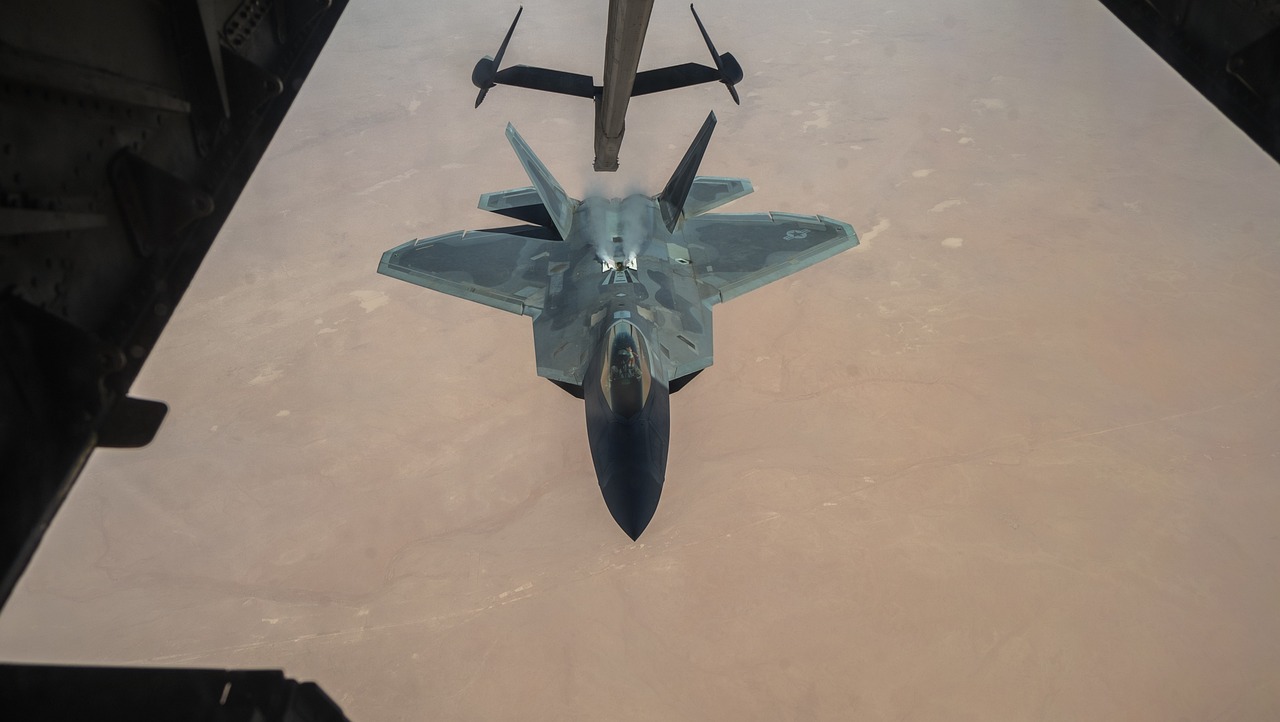
The Future of Aerodynamics
The future of aerodynamics is an exciting frontier, where innovation and technology converge to redefine how we think about flight. As we stand at the brink of a new era, advancements in computational fluid dynamics (CFD) and materials science are paving the way for more efficient and environmentally friendly aircraft designs. Imagine a world where airplanes are not only faster but also dramatically reduce their carbon footprint—this is the promise of modern aerodynamics.
One of the most significant trends shaping the future of aerodynamics is the integration of artificial intelligence and machine learning into design processes. These technologies allow engineers to simulate countless design variations in a fraction of the time it would take using traditional methods. By analyzing vast amounts of data, AI can help identify the most efficient shapes and configurations for aircraft, leading to improved performance and reduced drag.
Moreover, the push for sustainable aviation practices is gaining momentum. Engineers are exploring new materials and designs that not only enhance performance but also contribute to sustainability. For instance, bio-inspired designs, which mimic the efficiency of bird wings, are being studied to create aircraft that can fly with less energy. The use of lightweight composite materials is also on the rise, as they significantly reduce the weight of aircraft, thereby improving fuel efficiency.
In addition to these advancements, the development of electric and hybrid propulsion systems is revolutionizing the aviation industry. These technologies promise to reduce reliance on fossil fuels, leading to cleaner and quieter flights. As battery technology continues to improve, we may soon see electric aircraft capable of short-haul flights, fundamentally changing the landscape of regional travel.
To illustrate the impact of these advancements, consider the following table that highlights some emerging technologies in aerodynamics:
| Technology | Description | Potential Impact |
|---|---|---|
| Computational Fluid Dynamics (CFD) | Advanced simulations for testing aerodynamic designs. | Faster design iterations and optimized performance. |
| Bio-inspired Designs | Aircraft designs that mimic natural forms. | Increased efficiency and reduced energy consumption. |
| Electric Propulsion | Engines powered by electricity or hybrid systems. | Lower emissions and quieter operations. |
As we look to the future, the role of aerodynamics will extend beyond aviation. The principles of aerodynamics are being applied in various fields, such as automotive design, where engineers are striving to create vehicles that are not only faster but also more fuel-efficient. Sports equipment, from bicycles to golf clubs, is also benefiting from aerodynamic research, helping athletes achieve peak performance.
In conclusion, the future of aerodynamics is not just about enhancing flight; it’s about creating a sustainable and efficient world. As technology continues to evolve, we can expect to see groundbreaking innovations that will change the way we travel and interact with our environment. The sky is no longer the limit; it’s just the beginning.
- What is computational fluid dynamics?
Computational fluid dynamics (CFD) is a branch of fluid mechanics that uses numerical analysis and algorithms to solve problems involving fluid flows, allowing engineers to simulate and analyze the aerodynamic performance of designs. - How can aerodynamics contribute to sustainability?
Aerodynamics can contribute to sustainability by optimizing designs to reduce fuel consumption, utilizing lightweight materials, and developing electric or hybrid propulsion systems that lower emissions. - What are bio-inspired designs?
Bio-inspired designs are innovations that take inspiration from nature, such as the wing shapes of birds or the streamlined bodies of fish, to improve the efficiency and performance of aircraft and vehicles.
Frequently Asked Questions
- What is lift and how is it generated?
Lift is the force that allows an aircraft to rise off the ground. It is generated primarily by the wings of the plane as air flows over and under them. The shape of the wing, known as an airfoil, and the angle at which it meets the oncoming air (angle of attack) play crucial roles in creating lift. When the air pressure above the wing is lower than the pressure below, lift is created, allowing the plane to ascend.
- What types of drag affect an aircraft's performance?
Drag is the aerodynamic force that opposes an aircraft's motion through the air. There are two main types of drag: parasitic drag, which arises from the aircraft's shape and surface friction, and induced drag, which is a byproduct of lift generation. Understanding these types of drag is essential for engineers to design more efficient aircraft that minimize resistance and improve fuel efficiency.
- How do engines generate thrust?
Engines generate thrust by expelling mass in one direction to propel the aircraft in the opposite direction, following Newton's third law of motion. Different types of engines, such as jet engines and propeller engines, utilize varying mechanisms to create this force. Jet engines suck in air, compress it, mix it with fuel, and ignite it, resulting in a high-speed exhaust that pushes the aircraft forward.
- What are control surfaces and why are they important?
Control surfaces, such as ailerons, elevators, and rudders, are movable parts of an aircraft that help pilots maneuver and control the flight path. Ailerons control roll, elevators manage pitch, and rudders influence yaw. These surfaces are crucial for maintaining stability and ensuring safe flight operations, allowing pilots to respond to changing conditions in the air.
- How is aerodynamics applied in fields outside aviation?
Aerodynamics principles extend beyond aviation and are applied in various fields, including automotive design, sports, and environmental science. For instance, car manufacturers utilize aerodynamic designs to enhance fuel efficiency and stability, while sports equipment designers consider aerodynamics to improve performance. Understanding these principles can lead to innovations and improvements across multiple industries.
- What advancements are shaping the future of aerodynamics?
The future of aerodynamics is being shaped by advancements in technology, such as computational fluid dynamics (CFD) and sustainable aviation practices. CFD allows engineers to simulate and analyze airflow around objects, leading to better designs and performance. Additionally, the focus on reducing environmental impact is driving innovations in aircraft design and propulsion systems, paving the way for greener aviation solutions.











